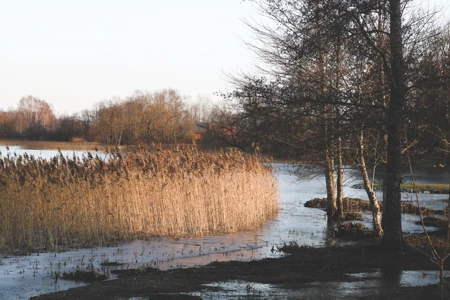Finding out your dream home is in a flood risk area is heart-breaking – but don’t panic! It doesn’t always mean the end of the road for your home purchase.
Whether your home has been previously flooded, or hasn’t flooded but is in a high-risk area, will affect many things. You’ll need to conduct more detailed surveys, and check that you can afford higher insurance costs associated with this type of property.
Here’s how to prepare when you find out that your potential new house is in a flood risk area.
Get detailed searches
A basic flood report will only tell you that your new home is situated in an area that has the potential to flood. It’ll state whether this is high or low-risk, but that’s about it.
Your report also won’t always take into account important geographical features of your property boundaries, either. For example, if the property is on raised land next to a water source, it may show as being in a flood risk area, despite never having been flooded.
A good example of this can be seen in the city of York – a place famous for its flooding. Riverside properties on the River Ouse are built on raised land. You can walk along the river with a 9-foot wall next to you. At the top of that wall lie the gardens and ground floors of the riverfront properties.
On paper, this boundary looks like it’s a high flood risk area. However, the river has yet to ever reach that height – even in the disastrous 2015 floods.
So, always take the basic search as an indicator of whether you need to investigate further. If it says your property will be in a flood risk area, commission an independent detailed flood report.
Investigate the circumstances of previous flooding
You can also find out about the flood risk of the area with a little investigative work. Speak to the neighbours and ask when the property or area last flooded. They may not remember a time this happened – or, they’ll tell you exactly why it happened. Public records also yield a lot of useful information about floods, too.
Sometimes, an unpredictable freak environmental event is the cause. The residents of Doncaster and surrounding areas, for example, are currently still recovering from the November 2019 flooding of the River Don. Four months of rain fell in 24 hours; an unprecedented amount localised to the region.
Other causes may be due to a string of unfortunate and unpredictable events. Let’s look at the 2015 York floods again. The river levels hit record highs not because the rain was exceptional (although it was bad), but because of a mechanical error at the Fossgate weir. Where the Ouse and Foss rivers convene, the water had nowhere to go but up.
Unlike a construction issue, such as a housing development reducing surface water drainage, this was a once-in-a-lifetime freak accident. The likelihood of such an event happening again is very, very small. So, if your house only flooded during this incident – and not the usual floods of the area, the risk is lower.
Consider recent flood prevention steps
Massive floods across Yorkshire and the Humber over the last decade mean huge efforts have been made to prevent properties flooding again.
For example, York council conducted major flood works further up the River Ouse to allow high river levels to spill onto safe flood plains. This means a lower volume of water is pushed through the narrower river channel through the city. Additional flood barriers and measures are also either in place or under construction.
If circumstances have changed since the property last flooded (or was at significant risk of flooding), this can reduce the risk of it happening again. As such, your mortgage provider may be more willing to lend to you.
Consider also the steps the vendor has taken to flood-proof or repair their home. New damp coursing or evidence of damp timber treatment can help put your mind at rest.
Talk to your mortgage provider
Speak to your local mortgage expert in York first to find out which mortgage providers might take on a property with flooding (or flood risk) history.
You need buildings insurance as a condition of getting a mortgage. If your property won’t qualify for buildings insurance, it’s unlikely you’ll find a mortgage provider willing to lend to you.
Other factors, such as the regularity of local and property flooding and flood prevention steps taken by the vendor and local authority will affect the mortgage lender’s decision, too.
A mortgage adviser will help you navigate and negotiate your flood-risk property situation with mortgage providers to try and find the right solution for you. Contact us on 01904 819903 to find out more about getting a mortgage for a flood-risk property.
Find out more about our Mortgage Advice service in York

